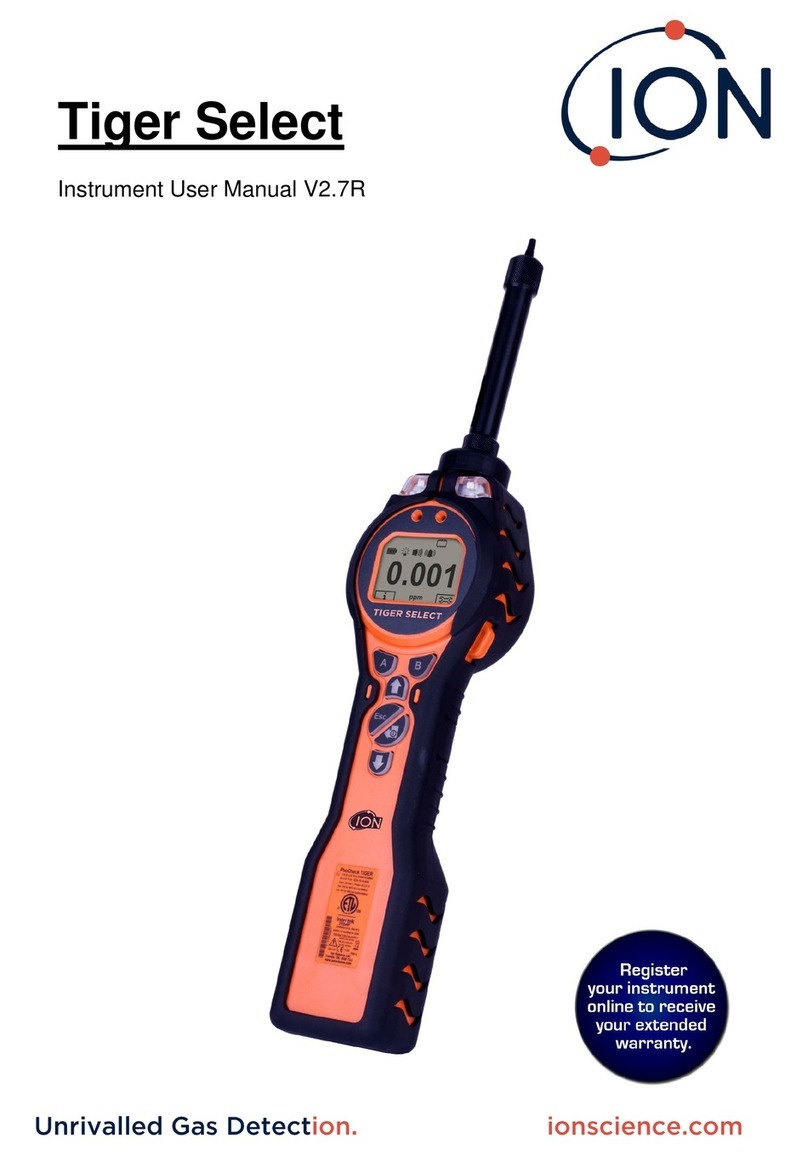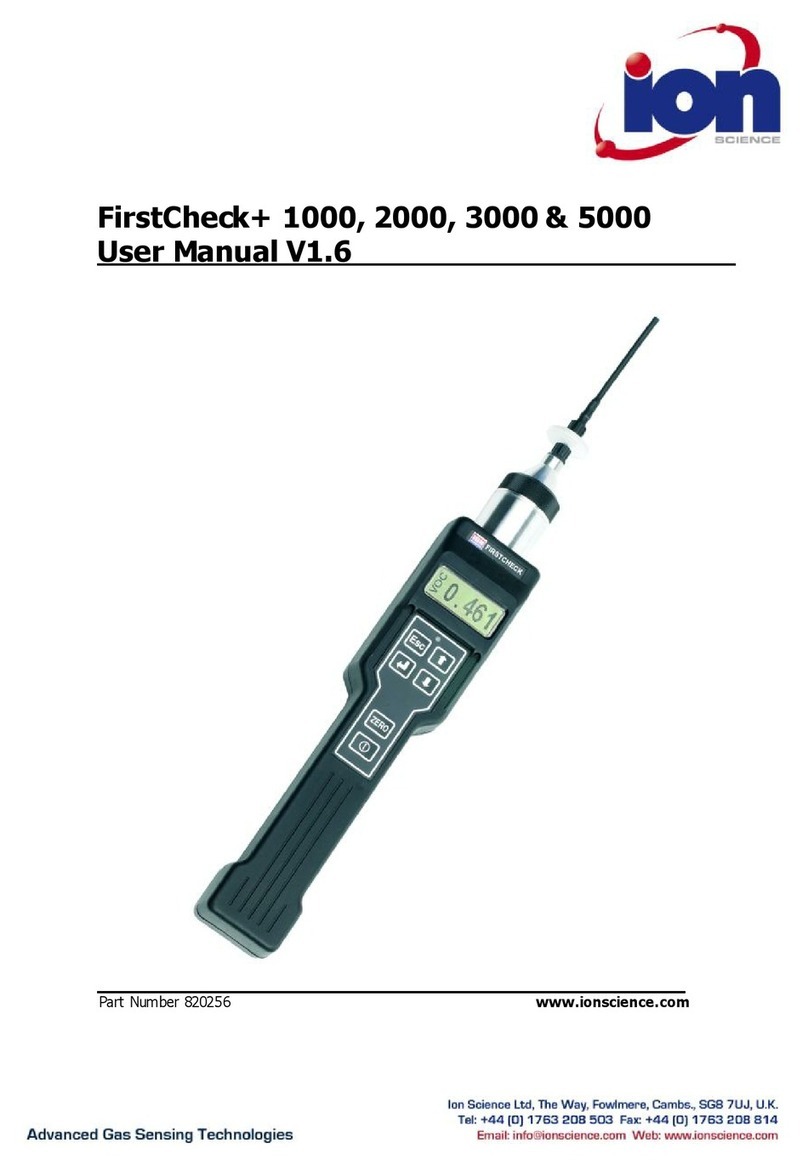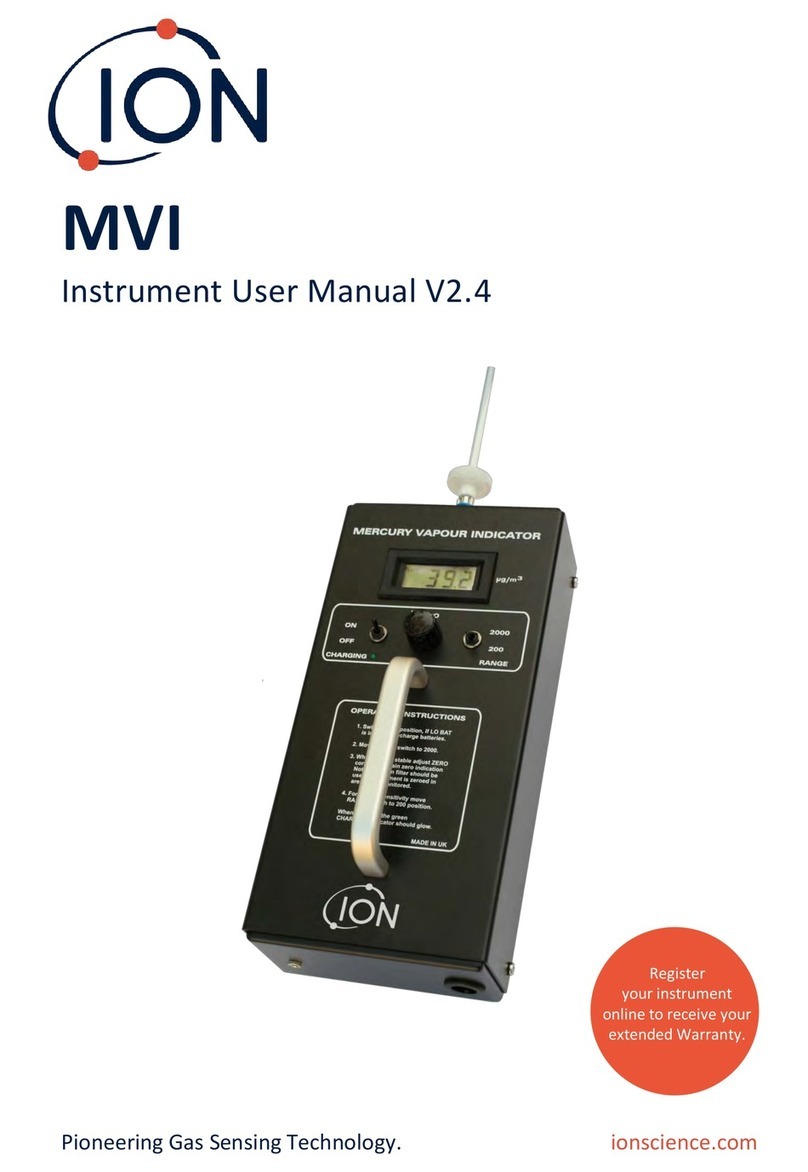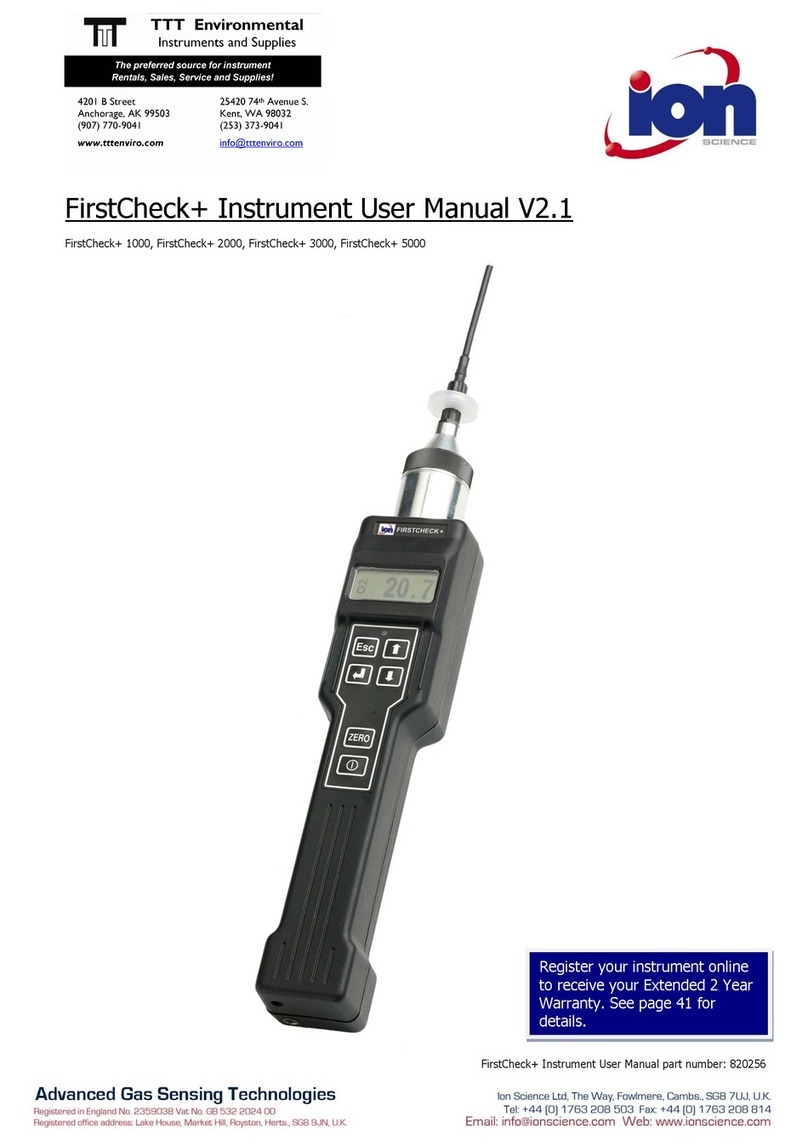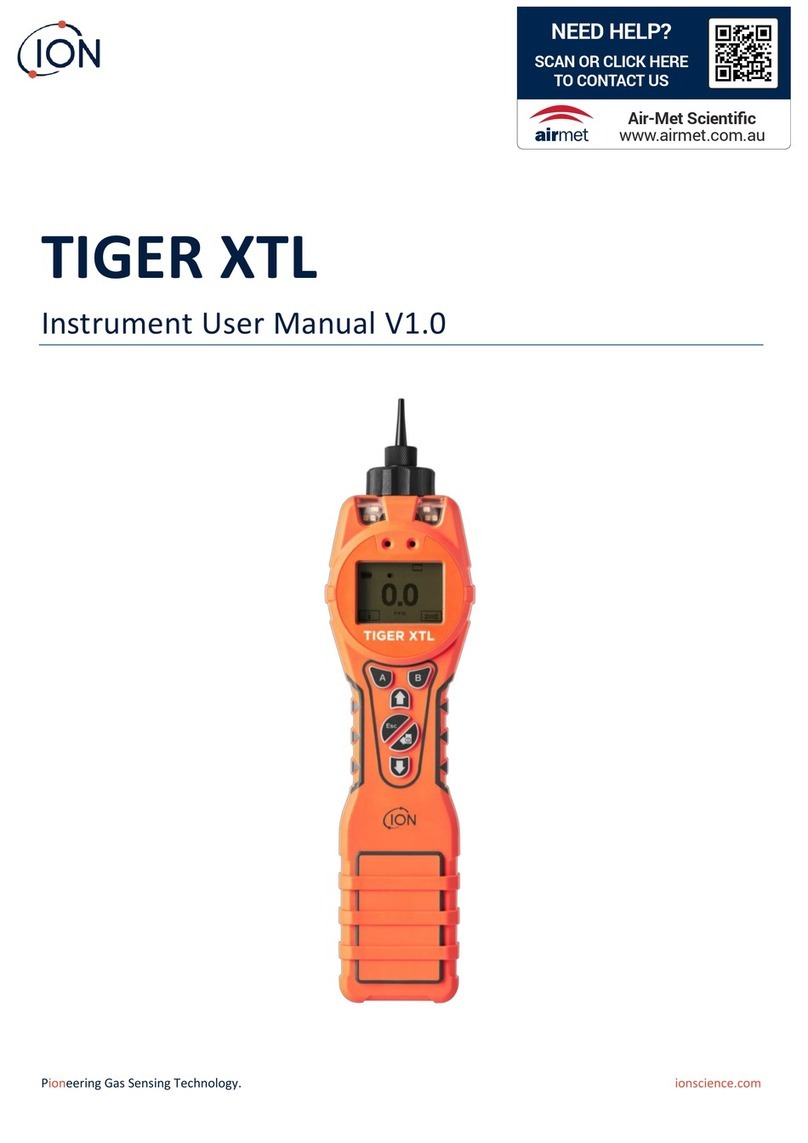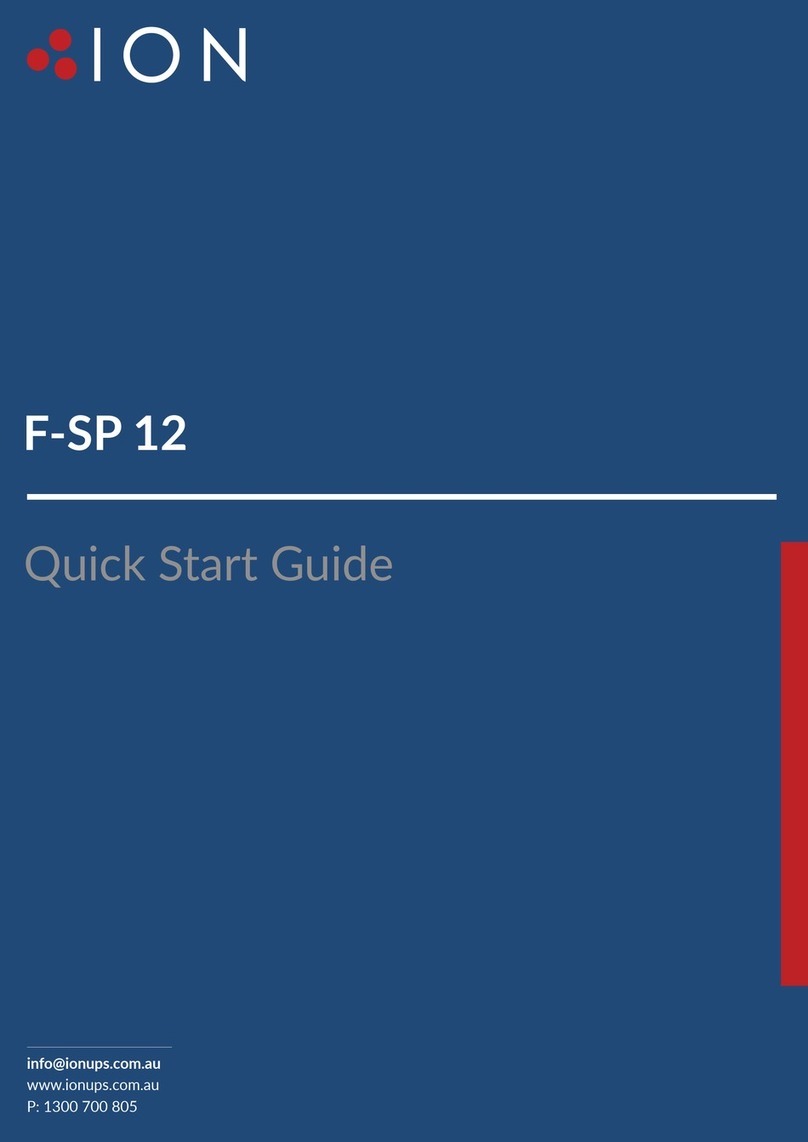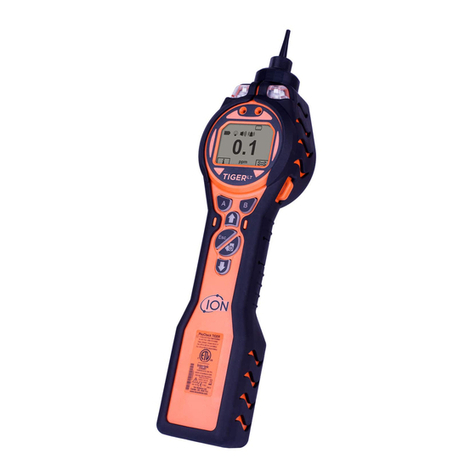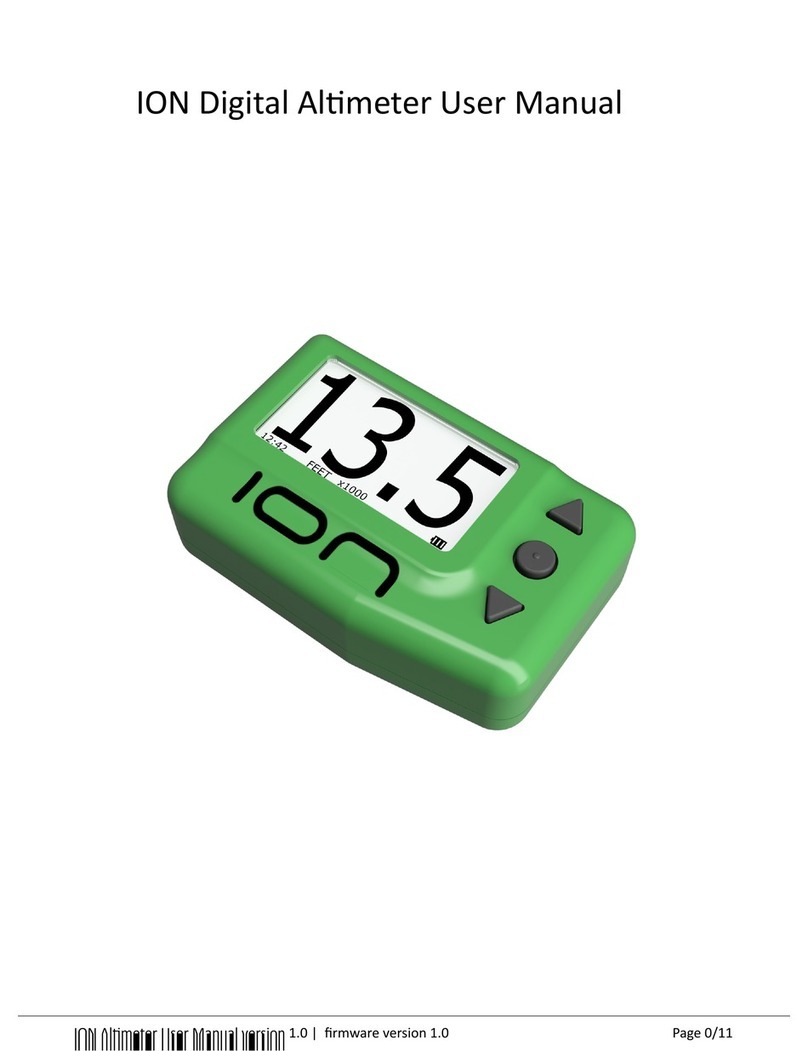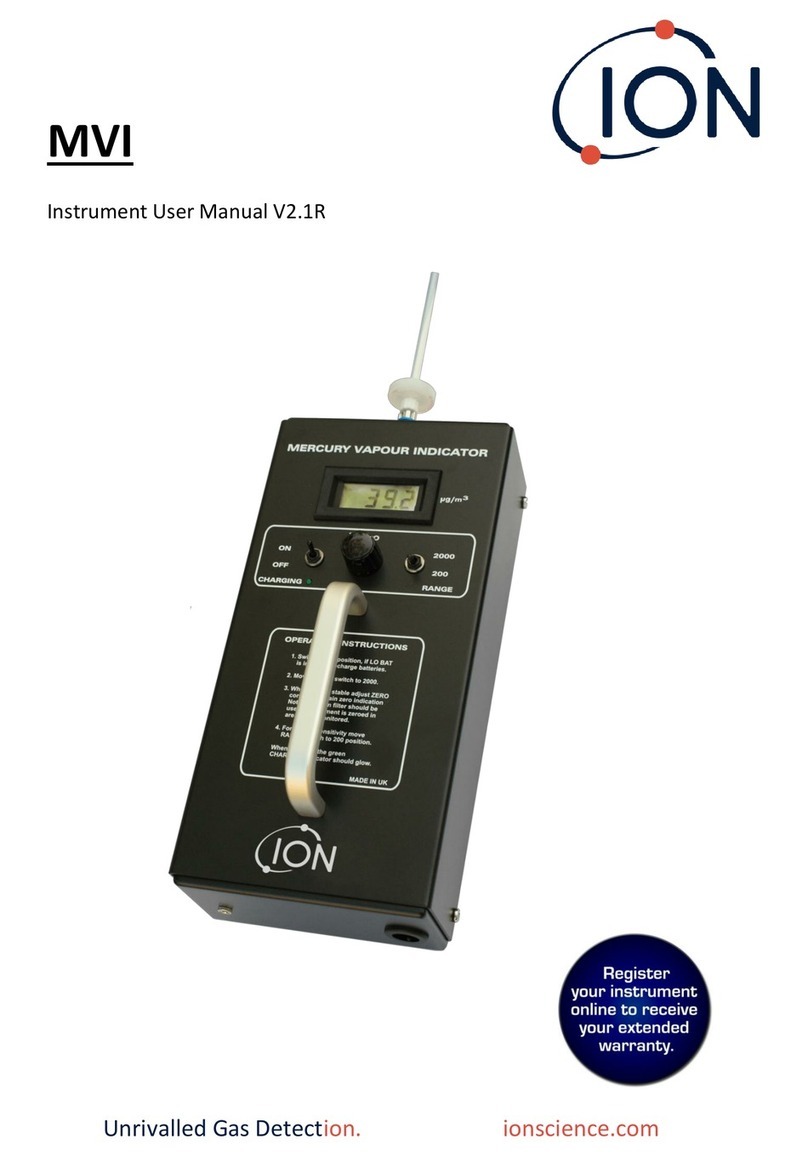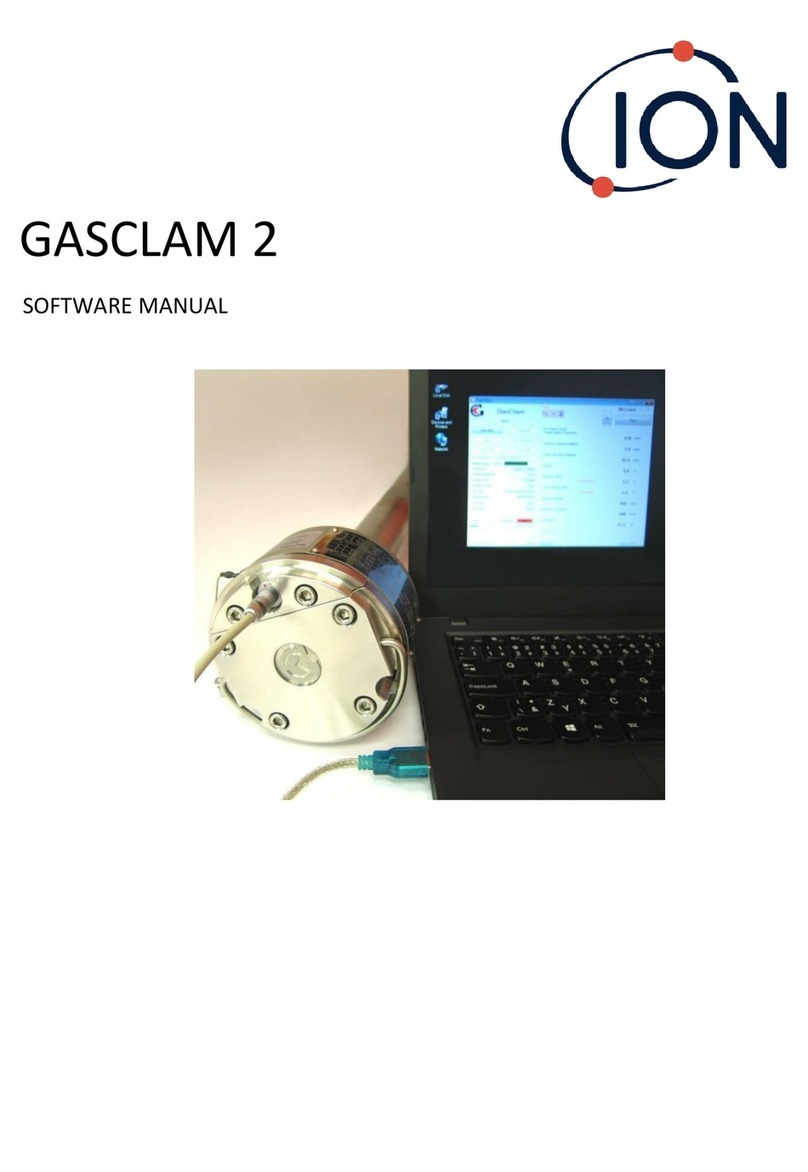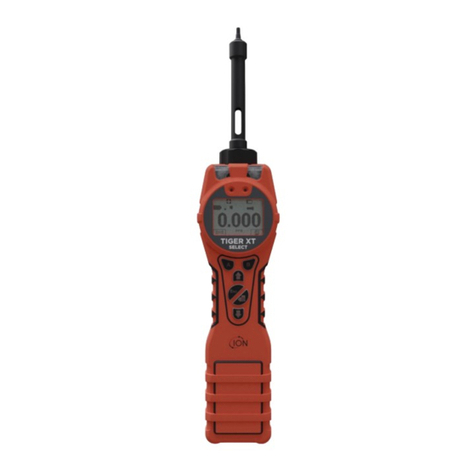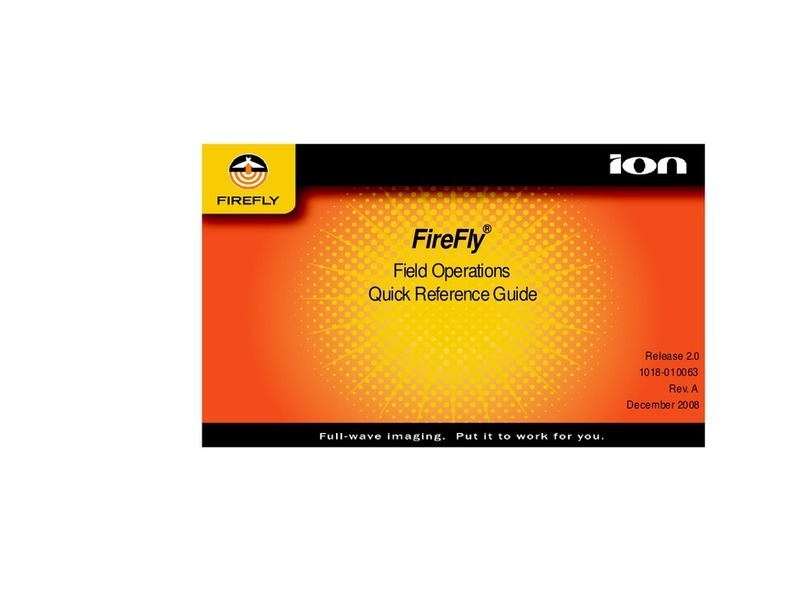
TVOC MANUAL Ion Science Ltd
Page 6 of 28
2 Introduction to TVOC
TVOC is a fixed continuous monitor for the detection and measurement of total volatile organic compounds,
which can be dangerous from both a poisoning and explosive perspective. Total VOC’s are detected using
PID (Photoionisation Detection) technology.
TVOC has a number of user selectable features which define its operation and will be application
dependent. The user can define the detection ranges or 0.01 - 10ppm, 0.1 –100 ppm or 1 –1,000 ppm
(Default); detection units, either ppm or mg/m3; and the duty cycle time i.e. the frequency that the
instrument takes a measurement. Duty cycles are explained in more detail on page 10, TVOC set up, and
page 15 Operation.
IMPORTANT: TVOC can be calibrated on alternative gases to Isobutylene however to ensure TVOC
remains within specification, the correct concentration for the alternative gas must be chosen.
Example: Benzene gas has a response factor of 0.5 which means only half as much concentration is required
to produce the equivalent to Isobutylene.
The ideal gas / concentrations used to set the calibration SPAN are shown below:-
Lower limit Upper limit
10 ppm range 8 ppm 12 ppm Isobutylene equivalent
100 ppm range 90 ppm 110 ppm Isobutylene equivalent
1,000 ppm range 90 ppm 110 ppm Isobutylene equivalent
How to calculate alternative concentration of gases for gases other than Isobutylene:-
Ideal response Response factor Ideal calibration gas
for Isobutylene concentration
Benzene 100 x 0.5 = 50 ppm
Isoprene 100 x 0.7 = 70 ppm
Isobutylene 100 x 1.0 = 100 ppm
Carbon Disulphide 100 x 1.4 = 140 ppm
Ethyl Acrylate 100 x 2.0 = 200 ppm
For other gas response factors please refer to the Ion Science web site or contact Ion Science Ltd.
http://www.ionscience.com/GasSearch/tabid/87/Default.aspx
WARNING: Ignoring these guide lines may result may result in calibration failure, loss of resolution or loss
of range.
The default settings of TVOC are:
Detection range –0.1 –1000 ppm
Units - ppm
Duty cycle - 5 seconds ON / 55 seconds OFF
TVOC gives a continuous 4 –20 mA output which can be integrated into a DCS control system to give an
indication of VOC levels in the operating environment.
In addition to the 4 –20 mA output TVOC has an LCD display showing gas concentration and 4 colour LED’s.
LED functions are as follows:
Green - is an indicator of TVOC’s working status
Red - is the fault indicator
Yellow x 2 - are calibration status indicators
Please see page 18Calibration for more information on LED status.












